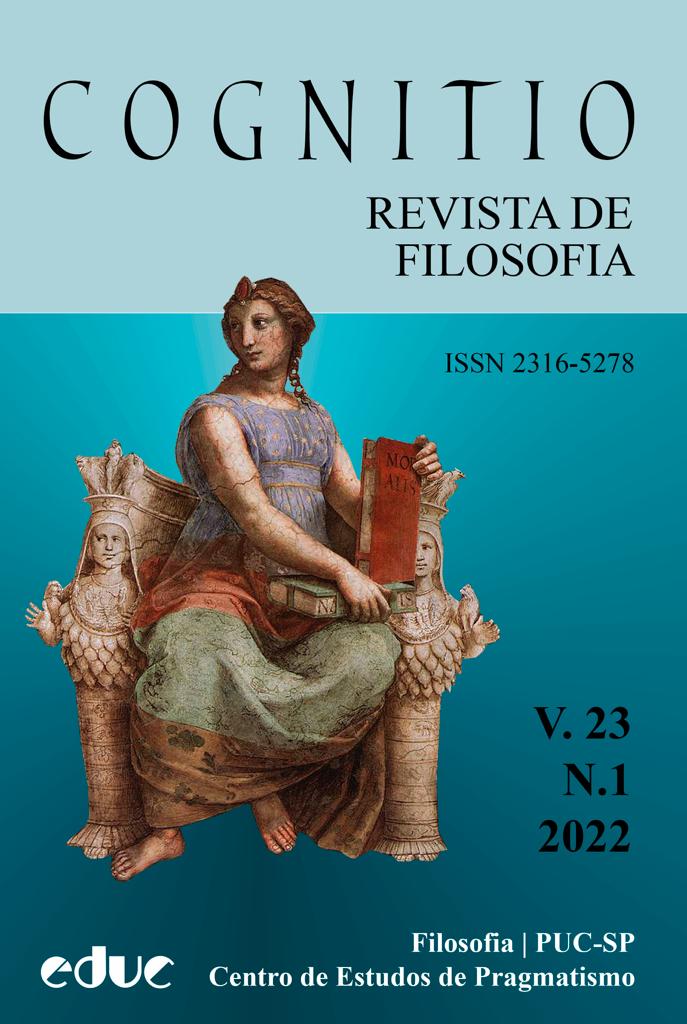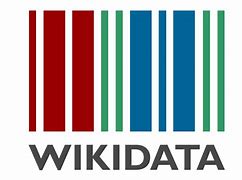Retórica revisitada, metodêutica reimaginada
DOI:
https://doi.org/10.23925/2316-5278.2022v23i1:e59812Resumo
O autor contextualiza a exploração da retórica e da metodêutica de C. S. Peirce em referência ao trabalho inevitavelmente incompleto de um experimentalista radical como Peirce. Ele tenta mostrar como mesmo no estágio inaugural do inquérito semiótico, considerações “retóricas” não estão totalmente ausentes. Além do mais, ele atende a alguns dos momentos mais importantes no qual Peirce revisitou o tema da retórica. Finalmente, ele pondera sobre como Peirce reimaginou a retórica como metodêutica e como nós mesmos poderíamos reimaginar até outras possibilidades. Este artigo está escrito como um convite para nos juntar aos esforços de Peirce como coinvestigadores, fornecendo próximo à sua conclusão, uma série de “anotações” ou sugestões de como podemos conduzir adiante o projeto de Peirce.Referências
ALSTON, William. Sign. In: EDWARDS, Paul (Ed.). Encyclopedia of philosophy. New York: 1967.
BELLUCCI, Francesco; CHIFFI, Daniele; PIETARINEN, Ahti-Veikko. Peirce on Assertion: a Symposium. The Transactions of the Charles S. Peirce Society, v. 57, n. 2, p. 205-209, Spring 2021. DOI: https://doi.org/10.2979/trancharpeirsoc.57.2.03.
BERGMAN, Mats. Peirce’s philosophy of communication. London: Continuum, 2009.
BERGMAN, Mats; GAVA, Gabriele. Introduction: Peirce’s rhetoric and methodeutic. Semiotica, v. 2018, n. 220, p. 217-219, 2018. DOI: https://doi.org/10.1515/sem-2017-0099.
BERNSTEIN, Richard J. Praxis and action. Philadelphia: University of Pennsylvania Press, 1971.
BERNSTEIN, Richard J. The lure of the ideal. In: KEVELSON, Roberta (Org.). Peirce and law: Issues in Pragmatism, Legal Realism, and Semiotics. New York: Peter Lang, 1991. p. 29-43.
BITZER, Lloyd F. The Rhetorical Situation. Philosophy and Rhetoric, v. 1, n. 1, p. 1-14, 1968.
BLACK, Max. The prevalence of Humbug and other essays. Ithaca, NY: Cornell University Press, 1983.
BOURDIEU, Pierre. The logic of practice. Translated by Richard Nice. Stanford: Stanford University Press, 1990.
BRENT, Joseph. Charles Sanders Peirce: a life. Revised and expanded edition. Bloomington: Indiana University Press, 1998.
BROCK, Jarrett E. Principal themes in Peirce’s logic of vagueness. In: BROCK, Jarrett E. (Ed).. Studies in Peirce’s Semiotic: A Symposium. Peirce Studies, number 1. Lubbock, TX: Texas Tech University Press, 1979. p. 41-49.
BUCHLER, Justus. Nature and judgment. New York: Columbia University Press, 1955.
BUCHLER, Justus. Toward a general theory of human judgment. Revised edition. New York: Dover Publications, 1979.
CLARKE, Jr., D. S. 1987. Elements of semiotic. London: Routledge & Kegan Paul, 1987.
COLAPIETRO, Vincent. To the Signs Themselves. Semiotics 1999, p. 377-388, 1999. DOI: https://doi.org/10.5840/cpsem199912.
COLAPIETRO, Vincent. Peirce’s Rhetorical Turn. Transactions of the Charles S. Peirce Society, V. 43, n. 1, p. 16-52, Winter 2007.
COLAPIETRO, Vincent. Self-control, self-surrender, and self-constitution. In: THELLEFSEN, Torkild; SORENSEN, Bent (Eds.). Peirce in his own words: 100 years of semiotics. Boston; Berlin: De Gruyter Mouton, 2014. p. 487-492.
COLAPIETRO, Vincent. The Pragmatic Spiral. In: FAIRFIELD, Paul; GENIUSAS, Saulius (Eds.). Relational hermeneutics: essays in comparative philosophy. London: Bloomsbury Academic, 2018. p. 77-89.
COLAPIETRO, Vincent. Peirce as reader and reading as reverie. Cognitio: Revista de Filosofia, [S. l.], v. 19, n. 1, p. 56-76, 2018. DOI: 10.23925/2316-5278.2018v19i1p56-76.
COLAPIETRO, Vincent. Peirce as a writer. Philosophy and Literature, [S. l.], v. 43, n. 2, p. 384-410, 2019. DOI: 10.1353/phl.2019.0022
CULLER, Jonathan. The pursuit of signs: semiotics, literature, and deconstruction. Ithaca, NY: Cornell University Press, 1981.
DEELY, John. What distinguishes human understanding? South Bend, IN: St. Augustine’s Press, 2002.
DEWEY, John. Human nature and conduct: The middle works of John Dewey, v. 14: 1922. Edited by Jo Ann Boydston. Carbondale: SIU Press, 1983.
DEWEY, John. The quest for certainty: The later works of John Dewey, v. 4: 1929. Edited by Jo Ann Boydston. Carbondale: SIU Press, 1988.
ECO, Umberto. On fish and buttons: Semiotics and the philosophy of language. Semiotica, v. 48, n. 1-2, p. 97-117, 1984.
ECO, Umberto. Semiotics and the philosophy of language. Bloomington: Indiana University Press, 1986.
FISCH, MAX H. Peirce, semeiotic, and pragmatism: essays by Max H. Fisch. KETNER, Kenneth L.; KLOESEL, Christian J. W. (Eds.). Bloomigton, IN: Indiana University Press, 1986.
FREEMAN, Eugene. The categories of Peirce. Chicago: Open Court Publishing Co., 1934.
FREUD, Sigmund. Introductory lectures on psychoanalysis. Translated by James Strachey. New York: W. W. Norton & Co., 1966.
GALLIE, William B. Peirce and pragmatism. Harmondsworth, UK: Penguin Books, 1952.
HAUSMAN, Carl R. Eros and Agape in Creative Evolution: A Peircean Insight. Process Studies, v. 4, n. 1, p. 111-125, Spring 1974.
HAUSMAN, Carl R. A discourse on novelty and creation. Albany, NY: SUNY Press, 1985.
HUME, David. My own life. New York: Cosimo Classics, 2015.
IBRI, Ivo A. Semiótica e pragmatismo: interfaces teóricas. v. 1. São Paulo: Cultura Acadêmica, 2020.
KROIS, John M.; PEIRCE, Charles S. Ideas, Stray or Stolen, about Scientific Writing, No. 1. (An Unpublished Manuscript), Philosophy and Rhetoric, v. 11, n. 3, p. 147-155, Summer 1978.
LISZKA, James J. Peirce’s new rhetoric. Transactions of the Charles S. Peirce Society, v. 36, n. 4, p. 439-476, 2000.
LYNE, John R. Rhetoric and Semiotic in C. S. Peirce. The Quarterly Journal of Speech, v. 66, p. 155-168, 1980.
MACINTYRE, Alasdair. A brief history of ethics. Notre Dame, IN: University of Notre Dame Press, 1998.
MACINTYRE, Alasdair. Epistemological crises, dramatic narrative, and the philosophy of science. In: MACINTYRE, Alasdair. The tasks of philosophy. Selected essays, v. 1. Cambridge: Cambridge University Press, 2006. p. 3-23.
MEYER, Michel. Rhetoric, language, and reason. University Park, PA: Pennsylvania State University Press, 1994.
MEYER, Michel (Ed.). From metaphysics to rhetoric. Dordrecht: Kluwer Academic Publishers, 1989.
NÖTH, Winfried. Habits, habit change, and the habit of habits according to Peirce. In: WEST, Donna; ANDERSON, Myrdene (Eds.). Consensus on Peirce’s concept of habit. Cham: Springer, 2016. p. 35-63.
PEIRCE, Charles S. Collected papers of Charles Sanders Peirce. HARTSHORNE, Charles. WEISS, Paul (Eds.). v. 1-6. BURKS, Arthur W (Ed.). v. 7-8. Cambridge, MA: Harvard University Press, 1931-1935; and 1958. 8 v.
PEIRCE, Charles S. Contributions to The Nation: Part I. KETNER, Kenneth L.; COOK, James E. Lubbock, TX: Texas Tech University Press, 1975.
PEIRCE, Charles S. The essential Peirce: selected philosophical writings. HOUSER, Nathan; KLOESEL, Christian; Peirce Edition Project (Eds.). Bloomington, IN: Indiana University Press, 1992; 1998. 2 v.
PEIRCE, Charles S. New elements of mathematics. EISELE, C. (Ed.), The Hague: Mouton Press, 1976. 5 v.
PEIRCE, Charles S. The Charles S. Peirce Papers, Microfilm Edition, thirty reels with two supplementary reels later added. Cambridge, MA: Harvard University Library Photographic Service, 1966.
PEIRCE, Charles. S. The Nature of Science. In: STUHR, John J. (Ed.). Pragmatism and classical American philosophy: essential readings and interpretative essays. New York; Oxford: Oxford University Press, 1987. p. 46-48.
PERRY, Ralph Barton. The thought and character of William James. Boston: Little, Brown & Company, 1935. 2 v.
PUTNAM, Hilary. Between the New Left and Judaism, an interview conducted by Giovanna Borradori. In: BORRADORI, Giovanna. The American philosopher: conversations with Quine, Davidson, Putnam, Nozick, Danto, Rorty, Cavell, MacIntyre, and Kuhn. Translated by Rosanna Crocitto. Chicago: University of Chicago Press, 1994. p. 55-69.
RANSDELL, Joseph. Semiotic and linguistics. In: RAUCH, Irmengard; CARR, Gerald F. The signifying animal: the grammar of language and experience. Bloomington, IN: Indiana University Press, 1980. p. 135-185.
RANSDELL, Joseph. Semiotic objectivity. In: DEELY, John; WILLIAMS, Brooke; KRUSE, Felicia. Frontiers in semiotics. Bloomington, IN: Indiana University Press, 1986.
RANSDELL, Joseph. Peirce and the Socratic Tradition. Transactions of the Charles S. Peirce Society, v. 36, n. 3, p. 341-356, Summer 2000.
RICOEUR, Paul. Rhetoric-Poetics-Hermeneutics. In: MEYER, Michel (Ed.). From metaphysics to rhetoric. [S. l.]: Kluwer Academic Publishers, 1989. p. 137-149.
RISHDIE, Salman. Imaginary homelands: essays and criticism 1981-1991. London: Penguin Books, 1991.
SANTAELLA, Lucia. Methodeutic, the Liveliest Branch of Semiotics. Semiotica, v. 124, n. 3/4, p. 377-395, 1999.
SAVAN, David. An introduction to C. S. Peirce’s full system of semeiotic. Toronto: Toronto Semiotic Circle, 1988.
SAVAN, David. Peirce and the Trivium. Semiotics 1988, p. 116-123, 1988. DOI: https://doi.org/10.5840/cpsem19883.
SCRUTON, Roger. Possible worlds and premature sciences. The London Review of Books, v. 2, n. 2, 7 February 1980. Available at: https://www.lrb.co.uk/the-paper/v02/n02/roger-scruton/possible-worlds-and-premature-sciences.
SEGAL, Hanna. The Achievement of Ambivalence. Common Knowledge, v. 1, n. 1, p. 92-104, 1992.
SEGAL, Hanna. Psychoanalysis, Literature, and War: papers 1972-1995. STEINER, John (Ed). London: Routledge, 1997.
SHAPIRO, Michael. The sense of grammar: language as semeiotic. Bloomington, IN: Indiana University Press, 1983.
SHORT, Thomas L. Peirce’s theory of signs. Cambridge: Cambridge University Press, 2007.
STEARNS, Isabel. Firstness, Secondness, and Thirdness. In: WIENER, Philip; YOUNG, Frederic. Studies in the philosophy of Charles Sanders Peirce (First Series) Cambridge, MA: Harvard University Press, 1952. p. 195-208.
VIOLA, Tullio. Peirce on the uses of history. Berlin: Walter de Gruyter, 2020.
WALLACE, James D. Norms and practices. Ithaca, NY: Cornell University Press, 2009.
WHITEHEAD, A. N. Adventures of ideas. New York: Free Press, 1961.
WITTGENSTEIN, Ludwig. Philosophical Investigations. Translated by G. E. M. Anscombe, P. M. S. Hacker and Joachim Schulte. New York: Macmillan, 1958.
Downloads
Publicado
Como Citar
Edição
Seção
Licença
Copyright (c) 2022 http://creativecommons.org/licenses/by/4.0/

Este trabalho está licenciado sob uma licença Creative Commons Attribution 4.0 International License.









